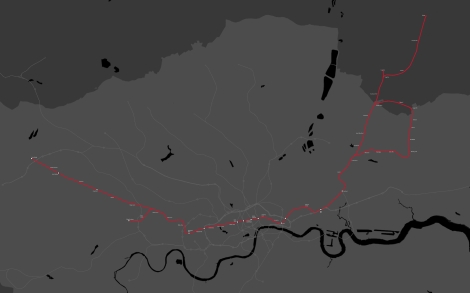The Central Line was opened as a cross- London route originally serving from Bank to Shepherd’s Bush. Today it now extends beyond Greater London and the M25, London’s orbital motorway. The line serves 49 stations, 20 of which are below ground covering 46 miles (74 km). It is the longest tube line and appears red in the Underground system.
Most of the tunnels for the extensions to the east of London had been built by 1940 but work was eventually suspended as a result of the Second World War. During the war some of the stations were used as air-raid shelters. The unused stations between Leytonstone and Newbury Park were converted into a fighter aircraft factory that stretched for over two miles, with its own railway system. It was opened in March 1942 and lasted three years. The existence of this factory remained an official secret until the 1980s.
HISTORY
The line first operated in 1900. The Prince of Wales and Mark Twain were on board for the inaugural journey of the first Central Line train. Electrification of the line was introduced in 1905 which caused a steady drop in traffic and the first boom in motor bus travel. In 1907, the line abandoned its flat rate policy and adopted its first fare change; three old pence for a journey of eight stations or more. Despite this, the name “Two-Penny Tube” continued for years. The development of the White City Exhibition at Wood Lane in 1907 called for a second line, from Shephard’s Bush to the depot. This formed a loop on which a station called Wood Lane was built, opposite the exhibition grounds and opened on the same day as the Franco-British Exhibition 1908.
Four years later, in 1912, the line was extended at its eastern end from Bank to Liverpool Street. Then in 1920, the line was further extended to the west as far as Ealing Broadway. The Second World War intervened before more ambitious plans of extensions at each end of the line could be implemented. These plans were then revived after the war.
INTERESTING FACTS
The Central Line has the longest journey without change from West Ruislip to Epping. The Greenford station is the only tube station still using wooden escalators. Chancery Lane Station has the shortest escalator of 9.1m (50 steps). The platforms at Redbridge are the shallowest on the tube lines at 7.9m below the road surface.
RIDERSHIP (2012)
260.916 million passenger journeys
